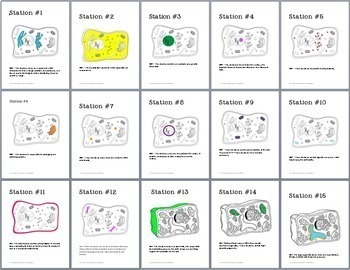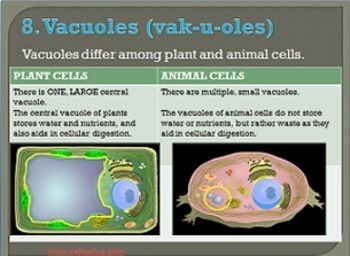Cells Unit Bundle
- Zip
- Google Apps™

What educators are saying
Also included in
- A biology curriculum bundle that has everything you need to teach high school biology for the entire year. This year long biology curriculum bundle includes models, case studies, task cards, labs, PowerPoints, study guides, projects, and now with the introduction of the model-based learning journalPrice $379.00Original Price $534.88Save $155.88
Description
Complete, useful, and engaging, this unit covers cell theory, cell structure and function of prokaryotic cells and eukaryotic cells, including plant and animal cells. There are labs, coloring activities, exhibition task cards (a favorite), coloring activities, stations, and reading activities that explore common cell structures as well as differences.
Several of the items are digitally hosted on Google Slides to support distance learning.
This is a complete unit containing everything you need to successfully teach your students. It even comes with its very own (editable) suggested unit plan so that there is no planning required. An editable quiz and editable test are also included to make your job easier.
Included in this Unit Plan:
50 minute and 90 minute pacing guides
Cell Type Jigsaw + Venn Diagram (Eukaryotic and Prokaryotic)
Cell WebQuest (Internet Lesson)
Totally Cellular! The Anatomy of a Cell (Animal Cell Coloring & Analysis)
From Cells to Organs- online exploration and cut and paste
Stem Cells and Cell Differentiation
Cell Organelle Stations (short lab or contest)
Cells Quiz
Cells Task Cards {exhibition lab}
Lab and Practice Sheet- Comparing Plant and Animal Cells
Cell Project Rubric
Unit Test
PLUS MORE- many accompanying digital options, and optional/additional practice, bellringer, etc.
2-3 week unit!
Please download the preview for more details.
Related NGSS Standards:
HS-LS1-2: Develop and use a model to illustrate the hierarchical organization of interacting systems that provide specific functions within multicellular organisms.
Do you use interactive notebooks in your classroom?
Check out my Cells Interactive Notebook to complement this unit plan.
Looking for the entire curriculum? You can get this unit along with several others in my Big Biology Curriculum Bundle
These are PDF's and ppt's. The unit plan comes at a bundled discount rate of 30% or more.
☆☆Follow me on☆☆
Terms of Use:
Vanessa Jason Biology Roots
For single classroom only; not to be shared publicly (do not create publicly accessible links).
Copying for more than one teacher, classroom, department, school, or district is prohibited. Failure to comply is a violation of the DMCA (Digital Millennium Copyright Act).






